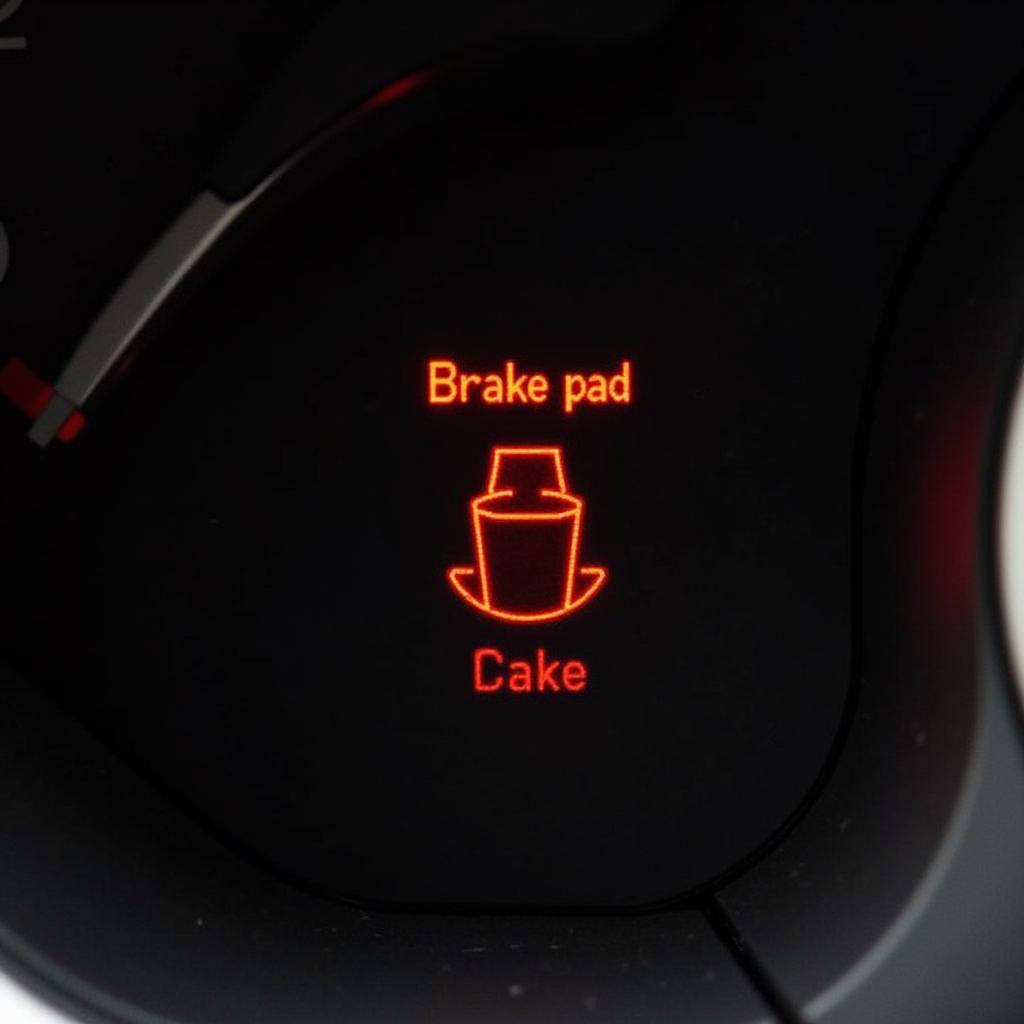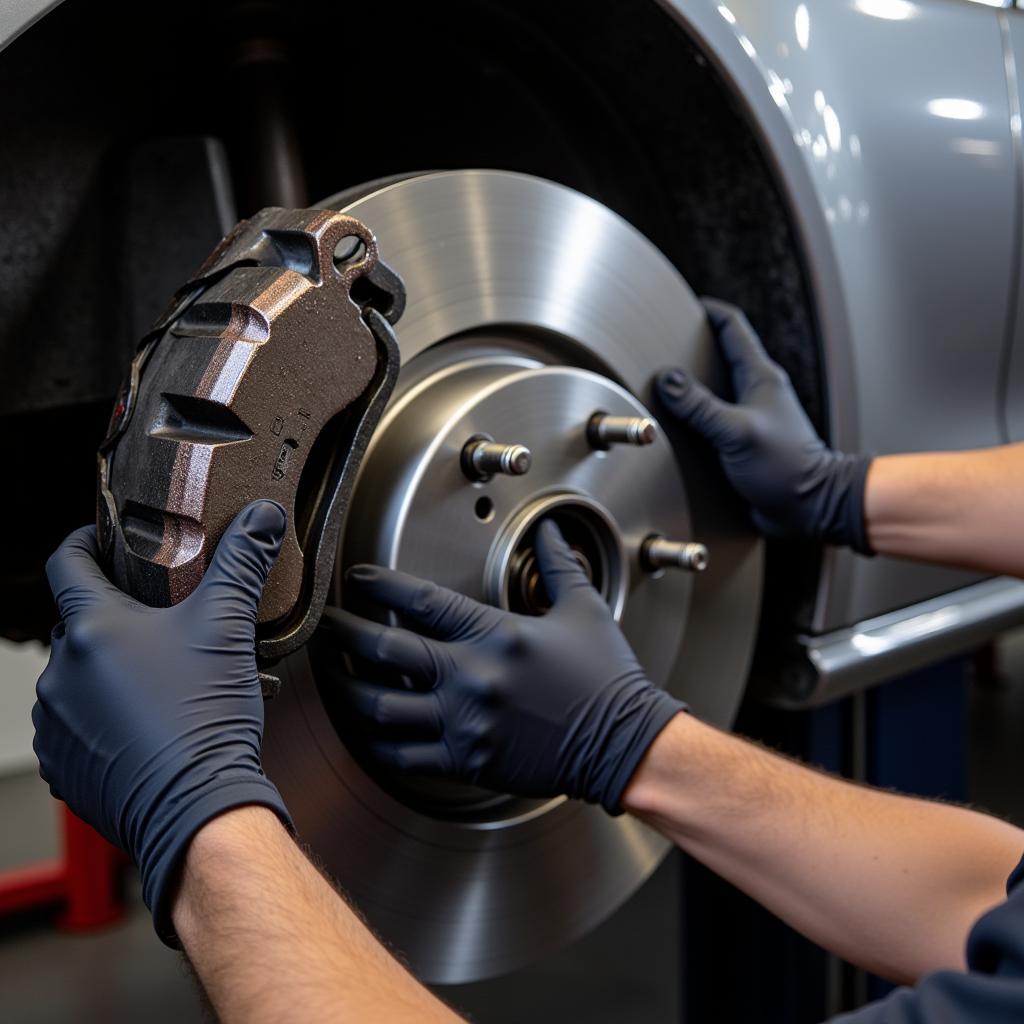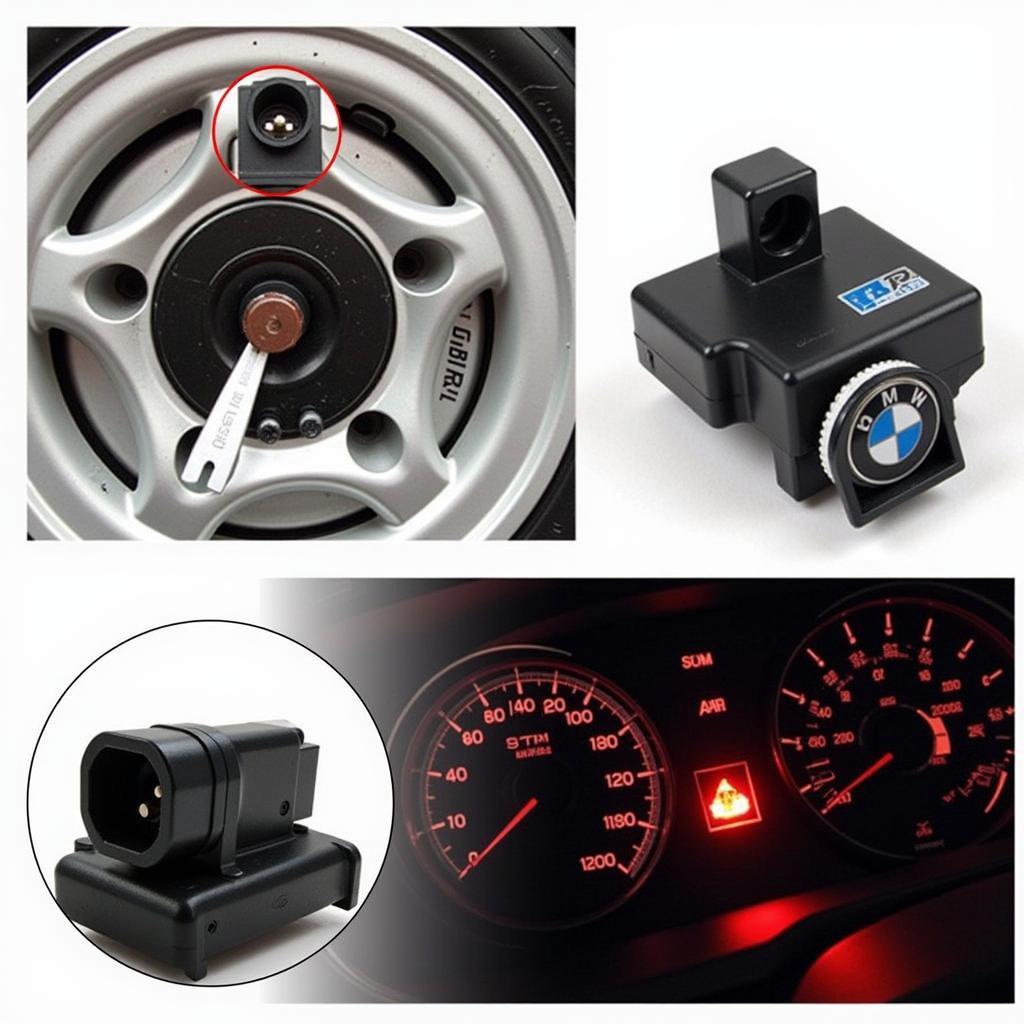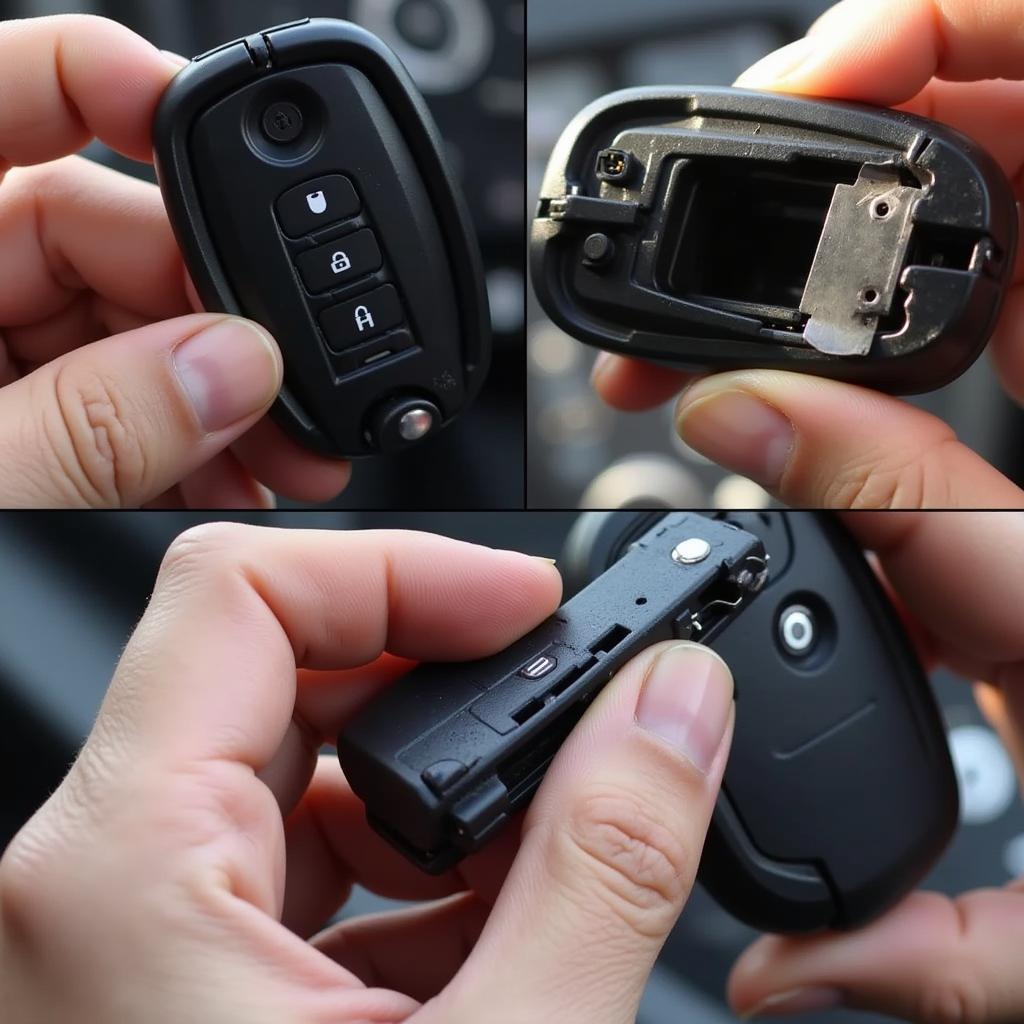The brake pad warning light on your 2012 Mercedes-Benz C300 is a crucial safety feature. It alerts you when the brake pads have worn down and need replacement. While a trip to the mechanic is always recommended, understanding how to diagnose and potentially reset the warning light can be incredibly helpful. This article will guide you through the process of identifying the cause, addressing the issue, and resetting the brake pad warning light on your C300.
Understanding Your C300 Brake Pad Warning Light
The brake pad warning light on your C300 dashboard is designed to illuminate when the brake pad sensor comes into contact with the brake rotor. This contact indicates that your brake pads have worn down to a point where replacement is necessary for optimal braking performance and safety.
 2012 Mercedes-Benz C300 Brake Pad Warning Light
2012 Mercedes-Benz C300 Brake Pad Warning Light
Common Causes of a C300 Brake Pad Warning Light
While worn brake pads are the most frequent culprit, there are other potential reasons your 2012 C300 brake pad warning light might be on:
- Worn Brake Pad Sensor: The sensor itself may be damaged or worn out, triggering the light prematurely.
- Faulty Wiring: A break in the wiring harness connected to the brake pad sensor can interrupt the signal, causing the light to come on.
- Brake Fluid Issues: Low brake fluid, often due to a leak, can trigger the brake warning light.
- Control Module Malfunction: In rare cases, a malfunctioning ABS control module might trigger a false warning.
Diagnosing the Issue: Beyond Worn Brake Pads
Before resetting the brake pad warning light, it’s essential to confirm the root cause.
- Visually Inspect Your Brake Pads: If you’re comfortable doing so, safely elevate your C300 and examine the brake pads through the wheel spokes. Look for significant wear or if the pad material is close to the metal backing plate.
- Check Brake Fluid Level: Locate the brake fluid reservoir under the hood and check the fluid level. If it’s low, there might be a leak in the system.
- Seek Professional Diagnostics: If you’re unsure or uncomfortable performing these checks, it’s always best to consult a qualified mechanic, especially if you suspect a wiring issue or control module malfunction.
 Inspecting Brake Pads on a 2012 Mercedes-Benz C300
Inspecting Brake Pads on a 2012 Mercedes-Benz C300
How to Reset the Brake Pad Warning Light on a 2012 C300
Important: Resetting the warning light without addressing the underlying problem is strongly discouraged.
If you have confirmed that your brake pads are worn and have been replaced, you can typically reset the warning light by following these steps:
- Turn the ignition to the “on” position without starting the engine.
- Press the brake pedal firmly and hold it down.
- While holding the brake pedal, turn the ignition off.
- Continue holding the brake pedal for a few seconds after the ignition is off.
- Release the brake pedal.
- Turn the ignition back to the “on” position and check if the warning light has reset.
Note: This method may vary slightly depending on the specific model year and trim of your C300. If this process doesn’t work, consult your owner’s manual or seek guidance from a Mercedes-Benz specialist.
Expert Insights on Brake Pad Warning Lights
“Many drivers mistake the brake pad warning light for a minor inconvenience,” says Mark Stevenson, a seasoned automotive technician specializing in European vehicles. “However, ignoring this crucial warning can lead to costly repairs down the road, compromising your safety in the process.”
He further emphasizes, “Regular brake inspections are key to avoiding unexpected issues. A simple visual check can provide peace of mind or alert you to potential problems before they escalate.”
When to Consult a Professional
While resetting the warning light after a brake pad replacement might seem straightforward, certain situations require professional attention:
- If the warning light remains on after resetting.
- If you suspect any issue beyond worn brake pads.
- If you are uncomfortable performing any diagnostic or repair work yourself.
Conclusion
Addressing the brake pad warning light on your 2012 C300 is essential for maintaining optimal safety and performance. By understanding the potential causes, knowing how to diagnose the issue, and following the correct reset procedure, you can confidently address this common automotive concern. However, remember that seeking professional assistance is always recommended when in doubt or facing complex problems.


